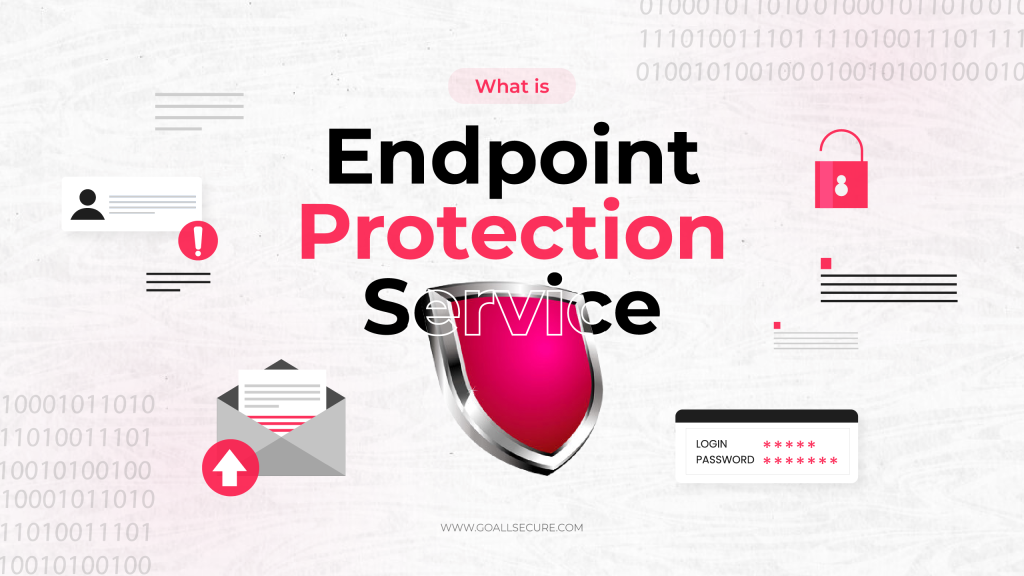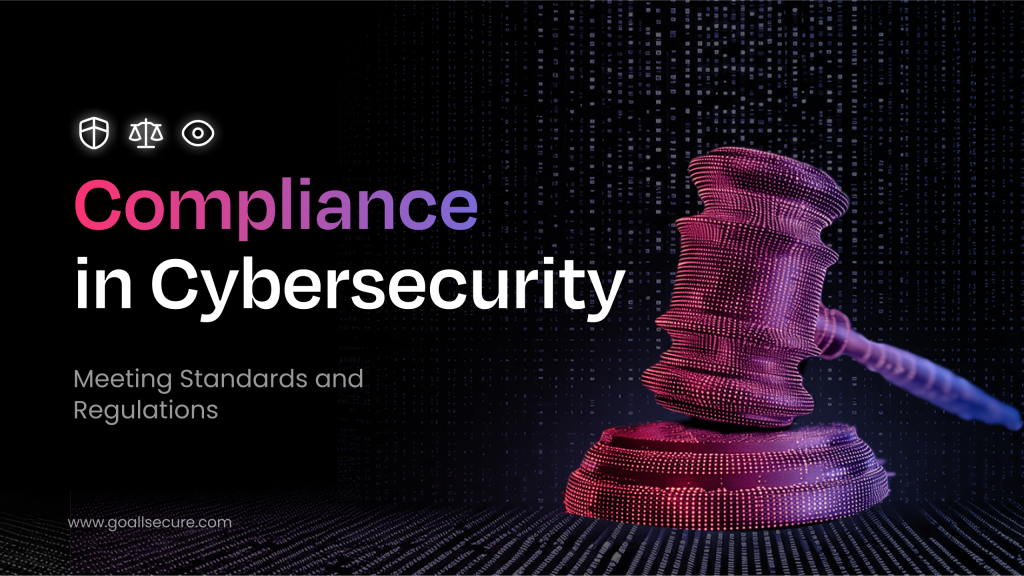In the current digital realm, cyber threats are far more dangerous than the physical ones. They hold the ability to destroy any organisation to dust within seconds without even getting in the vicinity. That is why cybersecurity is paramount for every business, small or big. The rules and regulations that make sure that every business takes cybersecurity seriously are called cybersecurity compliance laws. These laws are designed to rule out current and possible vulnerabilities that could impact businesses. The primary goal of cybersecurity compliance is to make sure that companies protect sensitive data by adhering to all relevant regulatory requirements and state and federal cyber legislation. Simply said, cybersecurity compliance is a risk management strategy that maintains data confidentiality and is in line with certain predetermined security procedures. In this blog, we will discuss more than just the significance of cybersecurity compliance. This blog will assist you in comprehending how cybersecurity rules and regulations affect your company and how to be on the correct side of compliance laws.
Understanding Regulatory Compliance in Cybersecurity
Cybersecurity compliance must be taken seriously by everyone, especially organisations that work with data or that have an edge that is exposed to the internet (which is almost all businesses). When data is accessed and moved across locations, organisations are exposed to various possible risks, including cyberattacks and cyber theft. These risks can be stopped from becoming attacks via regulatory compliance laws. Every organisation should look at compliance as a formal method of defending their company from cyberattacks, not merely a way to tick off boxes for government laws. Nonetheless, the success of any organisation will largely depend on cybersecurity compliance, no matter if they take it as a burden or advantage.
Definition
Regulatory and compliance frameworks are collections of cybersecurity best practices and recommendations. Companies adhere to these rules to satisfy legal requirements, enhance security procedures, fortify security, and accomplish other corporate goals. Compliance laws assist in preventing data breaches and preserving stakeholder and customer trust. Businesses that follow the guidelines issued by regulatory authorities, governmental laws, and industry standards shall be safe and have better risk governance. One thing must be remembered: to satisfy evolving compliance requirements, organisations should constantly assess and enhance their security posture.
The process of creating a thorough cybersecurity compliance plan entails putting together a specialised compliance team, carrying out in-depth risk assessments, putting strong security controls in place, creating transparent policies and procedures, and keeping watchful monitoring and response procedures.
Core Components
Cybersecurity maturity and compliance are not only best practices but also legal necessities depending upon the particular industry you work in. These rules are intricate and ever-evolving. Cyber compliance laws keep changing according to individual industry standards and requirements. Each industry seeks a unique regulatory environment, cybersecurity standards, and controls based on their needs. Despite that, there are a few core components that remain the same in all industries. Let’s take a look at the core components of cyber compliance:
- Adherence to Industry Standards
- Implementation of Policies and Procedures (Internal and External)
- Proper Risk Management
- Ensuring Access Control
- Data Protection Protocol
- Implementing Incident Response Procedures
- Employee Training and Awareness
- Regular Auditing and Monitoring
- Maintaining Reports and Documentation
- Compliance with Regulatory Requirements
Why Is Compliance Important in Cybersecurity?
It’s critical to recognise that cybersecurity compliance is essential to the success of any business and goes beyond a set of stringent, legally mandated criteria from regulatory agencies. These rules are developed to keep businesses and economies from crumbling to the ground. Another way to see this is that one should abide by these laws in order to avoid the regulatory fines that follow an unfortunate cybersecurity breach. Whether it is an internal or external breach that became public knowledge, it is in the best interest of businesses to comply with regulatory requirements. The likelihood of a process error is reduced when optimum security measures are established “by the book.” The measures should always include a set of guidelines that examine the most important systems and practices in charge of protecting sensitive information that companies gather and handle.
Fundamentally, the significance of cybersecurity compliance can never be understated. In this instance, we reckon that focusing on the repercussions of non-compliance makes it simpler to comprehend the advantages of cybersecurity compliance.
- Direct financial penalties
- Operational disruptions
- Loss of customer trust
- Reputational damage
- Legal fees
- Recovery costs
- Missed opportunities
Looking at these repercussions of non-compliance makes following the regulatory rules the best available option for any organisation. Organisations can assess risk, develop a framework to safeguard private information and lessen the likelihood of data breaches by complying with regulatory standards.
What Are Different Compliance and Regulations?
Standards for cybersecurity compliance are established by numerous cybersecurity regulatory agencies. Despite being different approaches, they often have similar target material and strive for the same objective: establishing guidelines that are easy to follow and adjust to the business’s technological environment with the ultimate goal of protecting sensitive data of all sorts. Data in this case includes personal information that aids in identifying an individual, such as full name, personal number, social security number, address, date of birth, or other sensitive information like personal health, and is the primary focus. Because sensitive information is frequently the target of cyberattacks, businesses that have access to it are more vulnerable. Different compliance and regulations are created for different data sets. For example, PCCI DSS is for the protection of payment-related data, and GDPR is for the protection of any general data. Now, the process of becoming compliant with a regulatory framework is continuous. Because digital surroundings are constantly changing, a control’s operational efficacy could degrade if it is not constantly updated.
The following are some of the regulatory frameworks you may encounter if you collaborate with an information security (IS) team or are a member of any business:
Payment Card Industry Data Security Standard (PCI DSS)
A set of regulations known as the Payment Card Industry Data Security Standard (PCI DSS) guarantees that all businesses keep credit card data safe. The purpose of this compliance is to guarantee that businesses handling credit card data take the appropriate precautions to secure it. Organisational compliance for this particular regulation needs to be verified every year, or else organisations can be considered non-compliant. Heavy fines, increased transaction costs, lost revenue, and damage to a company’s reputation can result from non-compliance with PCI DSS.
Health Insurance Portability and Accountability Act (HIPAA)
Hospitals, healthcare providers, and insurance companies are among the organisations that must have procedures in place to ensure the security of any personal health information (PHI) they collect, store, or handle. Because it affects everyone, it is arguably the most well-known healthcare cybersecurity compliance rule. According to HIPAA, third-party service providers, insurers, and healthcare organisations must put procedures in place to safeguard patient data and carry out risk assessments to find and reduce new threats.
General Data Protection Regulation (GDPR)
The General Data Protection Regulation (GDPR) is a privacy and data protection law that applies to nations in the European Union (EU) and the European Economic Area (EEA). GDPR creates a legal framework that directs the gathering and safeguarding of personal data belonging to persons residing in the EU. According to the GDPR, businesses must give consumers unambiguous terms and conditions about their data collection practices and allow them to freely control access to their data. Organisations must obtain people’s consent before processing their data in order to maintain its confidentiality, security, and obligation to notify in the event of a data breach.
National Institute of Standards and Technology Cyber Security Framework
Through its various guidelines on detecting, identifying, and responding to cyber threats, the National Institute of Standards and Technology (NIST) seeks to increase cyber awareness and improve the quality of digital life. Amongst its various frameworks is also a detailed guide on how to recover from cyberattacks. NIST’s guidelines are a holy grail for businesses to navigate the muddy waters of their digital territory. Despite being first developed for U.S. contractors and defence, NIST has been used by companies all over the world.
CCPA (California Consumer Privacy Act)
Customers in the United States have more control over the personal data that companies gather about them because of this state-specific statute. CCPA covers the rights to be informed, to have personal information deleted, and to refuse to have personal information sold. To safeguard customer information and guarantee its privacy and security, organisations should have policies in place, including data classification, access controls, encryption, data breach response plans, and frequent security audits.
Personal Information Protection and Electronic Documents Act (PIPEDA)
In Canada, PIPEDA regulates how private sector entities gather, utilise, and disclose personal data. It creates guidelines for notice of data breaches, access, and permission. Strong cybersecurity measures, such as encryption, access controls, frequent risk assessments, data breach response plans, and privacy policies, should be put in place by businesses to safeguard personal data, guarantee its confidentiality, and uphold the privacy-related rights of individuals.
Numerous other laws regulate cybersecurity compliance in different businesses and geographical areas in addition to the standards and regulations already listed. To comprehend and guarantee conformity, you must become familiar with these rules and guidelines. These are just a few of the legal and compliance frameworks that your company could have to follow. Although achieving compliance will take time, consistent reporting and monitoring can assist in standardising adherence to these principles (as well as the maintenance of a secure environment) across all corporate operations.
How To Be Compliant and Meet Regulatory Standards?
Any business could become the target of a cyberattack; it doesn’t matter if it employs thousands of people or is run by two. Now, because it’s common to believe that if you are little, possible risks will pass by, small businesses in particular often make themselves easy targets for malicious threat actors. However, failing to make the correct investment towards cybersecurity compliance and regulations can prove to be life-threatening for any organisation. So, how do businesses meet the necessary compliance criteria? Well, all they need to do is follow a few simple steps, and their safety will be sorted. Here is what a business should do:
Identify Your Organisation’s Applicable Regulations
Understanding the cybersecurity laws, rules, and standards that are relevant to your company is the first step. This knowledge is fundamental since it influences the compliance approach as a whole. There are industry-specific laws, geographic regulations, data-based considerations, etc., that you need to adhere to. Not every existing compliance law will apply to your organisation.
Discover Gaps In Your Current Compliance
Compare your present cybersecurity regulatory standards to the established rules and guidelines in a thorough evaluation. Finding the places where your company’s procedures fall short of compliance standards is the aim.
Implement Required Controls and Solutions
Once you discover the loopholes, fixing them in the order of most to least priority is next in line. Create and implement the technological controls, policies, and procedures required to close the gaps found in the gap analysis and adhere to compliance requirements.
Monitor and Update Regularly
Utilise technologies and solutions to keep an eye on the IT environment for compliance constantly. It is no longer regarded as best practice to audit an IT environment once a year. To verify compliance and pinpoint areas for improvement, conduct internal as well as external audits regularly.
Last but not least, you need to stop looking at compliance as a necessary evil and rather view it as a precautionary measure that saves you from threats and incurring fines all at the same time.
Conclusion
Let’s face it: cybersecurity compliance is extremely crucial, especially in the event of an incident, but it need not be difficult. These regulatory standards and guidelines exist for the sole purpose of empowering businesses with the tools to defend themselves against cyberattacks and data breaches. Adopting cybersecurity compliance is a calculated investment in the long-term prosperity and standing of a company. You not only significantly reduce cyber risks but also showcase your organisation’s dedication to security. These actions build confidence among your stakeholders, consumers, and government agencies, ensuring your business’ uninterrupted success.
If you’re unsure of how to get your business to comply or if you require assistance managing cybersecurity compliance, do not hesitate to connect with GoAllSecure. We can assist you in achieving cybersecurity compliance and avoiding financial penalties associated with non-compliance. Maintain confidence and safeguard your sensitive data with our experienced team. For more information regarding cybersecurity compliance and regulations, contact us at +91 85 2723 7851 or +44 20 3287 4253.

















 TRAVEL & HOSPITALITY
TRAVEL & HOSPITALITY HEALTHCARE
HEALTHCARE RETAILS & ECOMMERCE
RETAILS & ECOMMERCE BANKING & FINANCIAL
BANKING & FINANCIAL AutoMobile
AutoMobile MANUFACTURING
MANUFACTURING FOOD
FOOD EDUCATION
EDUCATION



